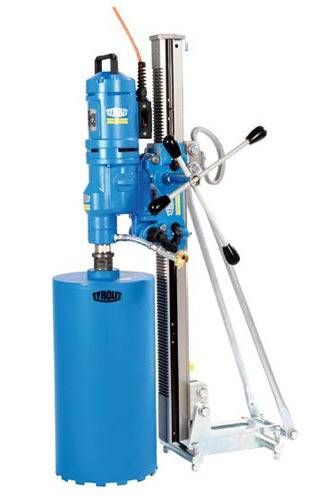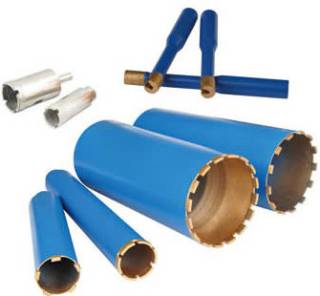The cylindrical strength is then co-related to cube strength. IS – 516 suggest a multiplying factor of 1.25 for converting cylindrical strength to equivalent cube strength. In addition a correction factor for height to diameter ratio and diameter shall be applied as given in IS – 516. IS – 456 states that the concrete in the member represented by a core test shall be considered acceptable, if the average equivalent cube strength of core is equal to at least 85 % of the cube strength of the grade of concrete specified, but no individual core has strength less than 75 %.


- Determining “In situ” compressive strength of structure
- Small cores for chemical tests
- Inserting water supply, plumbing pipes
- Inserting conducts for electrical cables
- Making pockets for machine foundation for inserting bolts
- Making weep holes in walls




Factors that affect core strength results –
- Systematic variation of in-place strength along member or throughout structure
- Random variation of in-place strength, both within one batch & among batches
- Low test results attributable to flawed test specimen or improper test procedure
- Effect of size, aspect ratio and moisture condition of the test specimen
- Additional uncertainty attributable to the testing that is present even for standardize tests
- Size, H/d ratio
- Direction of Core – upto 7 % less strength is noticed for horizontally drilled cores
- Reinforcement in the core
Reliability & Limitations
As this test gives actual in situ strength of concrete is more acceptable, but due to partial destructiveness needs to be used very carefully. The reliability of small cores i.e. 40 – 50 mm is less as compared to normal cores. The detection of reinforcement shall be perfect. If the quality of concrete is not good, one may not even get a complete core for testing. The cost of core cutting is more compared with other ND tests, as it consumes diamond bits, which are costly.
Some Observations & Recommendations –
- 100 to 150 mm diameter cores are recommended. But due to reinforcement spacing many a times 60 to 75 mm dia. cores are extracted
- Analysis and Interpretation of core test data is complex.
- Strength interpretation shall be made by an Expert Concrete Technologist and Structural Engineer
